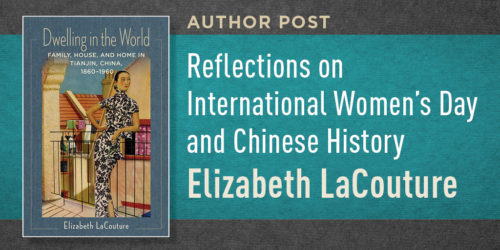Ho-fung Hung: South China’s Protests Are Not as Subversive as Many Think
“China’s escalating popular violence against local authorities and humble petition to the central government in the last two decades should be understood in light of [a] longstanding Confucianist conception of authority. This conception persists despite all the ideological and political revolutions of the twentieth century….”—Ho-fung Hung
The following post is by Ho-fung Hung, author of Protest with Chinese Characteristics:
The recent protests against land grab in Wukan and a polluting power plant in Haimen in South China have captured the world’s attention and lead many to ask whether something significantly different from China’s many other local protests is happening., The Wukan villagers’ orderly exercise of self-governance after the CCP authorities fled the village, as well as their political demand for local democracy, is rare if not unprecedented. So is the Haimen protesters’ occupation of the local government building.
The Wukan protest, in particular, resonates with many great uprisings in China’s history such as the Leiyang rebellion of 1844. In the early 1840s, local intellectuals in Hunan’s Leiyang County adamantly petitioned higher authorities against local tax abuses. The arrest and torture of a leading petitioner unleashed an armed revolt in which villagers seized the county seat and set up their own local government, which was short-lived and was crushed by imperial government forces. After the crackdown, the grievances against the Qing state continued to brew in the area and prepared many locals to embrace the Taiping Rebellion that shook the very foundation of Qing rule in the 1850s.
Despite their democratic demand and parallel with uprisings in Chinese history, we should also notice the Wukan protesters’ emphasis of their loyalty to the central government and their begging for mercy and aid from the highest authorities. In the Haimen protest, we likewise see protesters kneel during their action to beg for intervention from higher authorities to stop the construction of a second power plant. In this regard, these protests are not much different from most other recent local protests that are militant against local authorities but submissive toward the central government. Throughout the 1990s and 2000s, China watchers rested much hope on such confrontational local protests and cast them as precursors to larger-scale movements that could radically change the status quo. But these waves of unrest came and went and the party-state remained in control.
In my book, which surveys thousands of cases of protests in China’s imperial past, I found that similar waves of violent resistance against local governments, coupled with humble petitions to the power center (such as the wave in the early nineteenth century), cannot be explained simply by contingent political-economic factors, but had much to do with a deep-rooted Confucianist conception of authority and justice. Under this conception, abused subjects have a right to fight corrupt officials by any means necessary, but they should also count on the emperor as the loving grand patriarch to redress the injustice, just like children abused by their parents should look to their grandparents or lineage elders for paternalist protection. Sometimes the imperial authorities would compromise to the most submissive protesters as a way to exemplify mercy and increase legitimacy.
Time and again such submissive protests shielded the imperial center from popular unrest, helping the rulers survive major social crises. It should be noted though that this “safety valve” for the central authorities only worked when the subjects generally trusted that their rulers were legitimate and morally righteous. Such trust could disappear easily, sometimes because of rumors about the emperor’s promiscuity, or sometimes because of the emperor’s perceived failure in performing certain critical functions (such as defending the empire against foreign aggressors). Once this trust disappeared, the process of humble petition to the imperial center would suddenly recede and rebellion sprang up.
China’s escalating popular violence against local authorities and humble petition to the central government in the last two decades should be understood in light of this longstanding Confucianist conception of authority. This conception persists despite all the ideological and political revolutions of the twentieth century, and is constantly reproduced in popular legends, local historical dramas, and TV series about the imperial past. Even CCP leaders sometimes deliberately invoke people’s expectation of paternalist and benevolent care from the central government. It is not an accident that Premier Wen Jiabao once called himself “grandpa Wen”—Wen yeye—in front of the people. A leader in the Wukan protest expressed in an interview that he hoped the central government would send a special agent to secretly visit the area, find out what is really going on, and lead the highest leaders to stand on their side. This hope echoes the plot of many historical dramas in which justice is eventually done after the caring emperor sends a special envoy to investigate misdeeds of abusive local officials and carefully listen to his aggrieved subjects.
Of course, we should not be surprised if unexpected events—such as a major economic blunder, scandals, or open infighting involving the highest leaders—abruptly displace the popular trust in the central government and induce local protesters to start directing their anger toward the highest authorities, just as many local protests suddenly escalated into the Taiping Rebellion after the Qing defeat in the Opium War of 1839-42. So far, the submissiveness of Wukan and Haimen protesters toward higher authorities and their hope for aid from the central authorities signal that the central government still enjoys a decent level of legitimacy among grassroots contenders. Given all this, we should not expect that today’s growing social unrest in South China and elsewhere will necessarily destabilize the authoritarian status quo just yet.
5 Responses
-
Pingback: Wukan as history – Frog in a Well China
Leave a Reply
You must be logged in to post a comment.







I think the analysis correct and the historical comparison apt, yet the most telling paragraph is here:
“Time and again such submissive protests shielded the imperial center from popular unrest, helping the rulers survive major social crises. It should be noted though that this “safety valve” for the central authorities only worked when the subjects generally trusted that their rulers were legitimate and morally righteous. Such trust could disappear easily…” (my emphasis).
Now I ask you, doesn’t the governing authority, the CCP, have reason for caution when their moral claim to authority is openly challenged by widespread revelations and open condemnation of graft,corruption and excess? And through media increasingly beyond censors’ control? To the present these revelations have been confined to the local level, to the city, county and provincial officials who are blamed for cupidity and brutality towards the very persons they nominally represent and for whom they are responsible, but sooner or later the next step will be realized, i.e. the very legitimacy of the government that cannot control or remedy these excesses will be seriously questioned.
Time, it’s just a matter of time, and a short time too I’d bet.